‘Hey you, get ready, get on your feet. Get into gear and hit this street. Hey you, get moving – it’s not too far, you’re looking good so come as you are. Hey you, you never know what you’ll see when it’s through that door with the 73…’
There was a time when, before the introduction of forty-seven billion digital channels broadcasting every programme ever made all day every day, Saturday morning was the most important time in a child’s television viewing week. Full of adults doing stupid things in the name of entertainment, and featuring cartoons, the latest music and the occasional interview with a politician to pretend the show was also educating you (that was normally when I went to make some toast) they contained everything needed to help them start their weekend off with some chaotic fun.
And there was a knack to making a really successful Saturday morning kids’ TV show: aim it at grown-ups. All the best ones - TISWAS, No. 73, SM:TV and to a slightly lesser extent Going Live (mainly the Trev & Simon bits of course) – had the whacky, zany mahem (all live kids’ television programmes have to be described using those words apparently…) that children love, but also carried a level of humour that appealed to adults. Mostly because of the sniggered innuendo that parents prayed their offspring wouldn’t ask about.
TISWAS was loud, messy and in-your-face-anarchic. When Television South (TVS) devised a short-term replacement for it at the beginning of 1982 they took a different tack and came up with a completely new format. No. 73 was still live, it still featured guest stars, bands and competitions, but instead of everything happening in a studio, the setting was instead inside a house, complete with eccentric inhabitants. This allowed plotlines and characters to develop throughout the course of the show.
Broadcast only in the TVS region for the first season (it networked from the third season), it needed some fine-tuning before it became the much-loved programme that we all remember (not to mention that it didn’t yet feature the catchy theme tune whose lyrics begin this article).
Ethel Davis (Sandi Toksvig, now better known for her TV and radio presenting work such as The News Quiz) ‘owned’ the house where everything took place. Originally Toksvig played Ethel as an old lady (despite being barely into her twenties in 1982), who regularly opened her house to the local youngsters, who would pile in and watch the activities from within. Ethel was aided by her clumsy and always fashionably (ok, it was the early 1980s, so obviously you should replace ‘fashionably’ for ‘hideously’) dressed nephew Harry Stern (Nick Staverson) and her boyfriend Percy Simmonds (Patrick Doyle, now a well-known composer and director). Dawn Lodge (hugely successful film director Andrea Arnold) played the lodger (geddit?), known for her roller-booting antics around the house and her animal interactions alongside vet David Taylor.
The first series came and went and TISWAS returned to the TVS network until the summer. No. 73 then underwent a few transformations (no hoards of kids rampaging through the house, and it now included the new, punchy theme tune) and hit the screens again. This time, Ethel had somehow lost a fair few years and whilst she, Percy, Dawn and Harry (plus a few others) were still played as largely scripted characters, both they, and other new cast members were allowed to let their own personalities shine through, paving the way for lots of funny ad-libbing. This made it feel a lot more relaxed and natural, and therefore laugh-out-loud hilarious on plenty of occasions. This was with the exception of Harry, however – who didn’t appear to be able to say anything that hadn’t been written down for him. Neil Buchanan started to appear as, er – Neil the cartoonist and Kim Goody (who had appeared in Play Away, and went on to be a singer and songwriter) also began to show her face. Comedian Toksvig was the most naturally gifted performer on the set, with fantastic dead-pan humour and great comic timing.
As well as all the magazine show type of features, No. 73 also included storylines revolving around Ethel, the house and her personal relationships (including a ‘will-she-won’t-she’ plot involving an intended marriage to her very dull bank manager). There was also the odd spat with her neighbours, Martin and Hazel Edwards (Richard Addison and Jeannie Crowther), who tried to play the parental figures to counteract the mania next door.
The bit of the show that everybody really looked forward to was The Sandwich Quiz, whose title told you everything you needed to know: it was a quiz, and it involved sandwiches. Two contestants (who had guest-starred on the programme that week) stood behind a kitchen counter - on either side of the diminutive Ethel - armed with a knife that would be used for buttering purposes. Ethel started the quiz by reading out a general knowledge question. Whoever banged their knife on the counter first got to answer; if they got it right they won a slice of bread. They could then choose a category question in order to win a sandwich filling, and the player at the end of the game with the most complete sandwiches took the Golden Loaf trophy. Things generally got manic and out of control which made for lots of laughs, but the bit that everybody loved the most was at the beginning, when Ethel introduced the audience to the quiz via a fast-paced tongue-twister.
‘It’s the daring, dazzling, death-defyingly dull, devastatingly dangerous, delectable, delicatessen-able, divinely decadent Sandwich Quiz!’ (Incidentally, I heard Toksvig on the radio recently and she can still recite this at the same speed. This is probably because everybody she has met in the 25 plus years since she left No. 73 has asked her to do it for them.)
Also inserted into the programme’s mix were segments where the cast got to act in deliberately amateurish films created by Ethel’s newly-formed company ‘Front Door Productions’. Obviously sticking to the adage ‘so bad it’s good’, they were crammed full of horrendous jokes and puns, and were generally relished by both their cast and audience.
No. 73 continued to gain in popularity, although a spark was lost when Toksvig left after the sixth series in 1986. Dawn, Harry, Kim and Neil continued to host the Saturday morning pandemonium, with new cast members appearing throughout. The Sandwich Quiz turned into The Duster Muster (a cleaning competition. Not quite the same appeal as sandwiches), and a second, thinned-out cast version was introduced on a Sunday morning.
The eighth and last series took a slightly surreal turn: now renamed ‘7T3’, the house’s nasty landlord decided that the poorly maintained street it resided on should be torn down (No. 73 itself had plaster falling down on a regular basis by then), and replaced with a Wild West theme park. Of course it should. Perfectly reasonable idea. The cast moved into a saloon (still number 73 of course…No. 73 Wild West Street perhaps?) and the guest/band/competition action took place on the set of the cowboy town. I never saw this series, but reading this description back it doesn’t strike me as surprising that this series of 7T3 was the only one, and the door of No. 73 permanently closed in March 1988.
Undoubtedly the programme was at its best when Ethel was at the helm, but even the series that she didn’t feature in were still amongst the most original and entertaining Saturday morning programmes ever. Except when Frank Sidebottom featured in it, but I have a phobia of large, papier-mâché heads – so that might just be me.



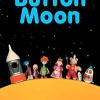

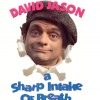
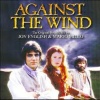
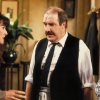

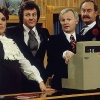
Do You Remember Number 73?
Do You Remember Number 73?